This blog was originally published on November 26, 2014. It was updated and re-published on November 9, 2018.
Table of Contents
Think of all the times you signed up for something online. Maybe it was an email newsletter or online class. Maybe you wanted to purchase a product or schedule a demo. All of those behaviors were guided by one thing: a call-to-action.
Investopedia defines a call-to-action (CTA) as a “the next step a marketer wants its audience or reader to take.” Quite simply, it directs users where to go and what to do. CTAs come in many forms. Your CTA could be:
- A “Buy Now!” button, or implore the consumer to make a purchase;
- A subscription that will provide your consumer with products and services not available to everyday visitors, or simply more information about your business;
- A “Read more” that directs your visitor to the next step of your marketing strategy;
- A phone number that they can call to speak with someone at your business;
- A donation button for a charitable cause;
…and many, many more.
What a CTA Does for Your Marketing
It may seem like a simple, inconsequential step. Do visitors really need to be told how to make a purchase? However, if you don’t have a CTA on your site, your business is missing out on crucial opportunities.
It’s not just about web design, either. In the email marketing world, emails with just one call-to-action experienced a 371 percent increase in clicks and a 1617 percent increase in sales. On social media, adding a CTA to your Facebook page could lead to a 285 percent increase in your click-through rate.
CTAs focus on conversion, taking your site’s one-time visitors and guiding them towards becoming customers. As described above, there’s no one universal CTA that works for every online marketer, or every piece of content. The best CTA depends on your insurance agency and what you’re trying to achieve. They could sign up for an email newsletter or webinar, enter a sweepstakes or try out a free trial. It could be a white paper, survey or downloading an app. Or it could be a direct request for a product demo or quote.
The ultimate purpose of CTAs is engagement. You want the individual to interact with you in some way, and the CTA lets them know what to do, how to do it, and why to do it.
Creating an Effective CTA
Now, let’s talk execution. Businesses have a limited window to capture a lead, and a CTA that isn’t readable and doesn’t get to the point may as well not be on the page.
Make your CTA prominent: time spent searching for information is wasted time. In other words, it should:
- Be staring them in the face, and
- Only take a few seconds to read and fill out.
Those few seconds could be the difference between a prospect filling out your form or moving on the the next Google result on the page.
Think about your overall site design: everything from color scheme to content arrangement. A CTA that isn’t readable or gets lost on the page will not bring you the leads that you want. If you have a button or form, think about putting it in a contrasting color, or putting it in a prominent, visible place on the page. Some businesses found that putting the CTA in a bold color, such as red or orange, respectively increased conversion by 21 percent and 32.5 percent, respectively. If you have a text CTA—like what you would find in a blog post—don’t hide it in the middle of a long, wordy paragraph. Make it stand out within the content. For many marketers, this means an anchor text CTA.
A CTA shouldn’t be a novel, or even a paragraph. Keep it short, simple, and to-the-point. Let your reader know what they can get by doing business with you, and tell them what to do. Using action words (“Buy now!” “Subscribe today!”) as well as providing numerical value (“Increase clicks by up to 371 percent!”) will be more impactful to your reader than abstract statements (“Join us!” How are they joining you? As a client? As a team member? Join you in doing what?). In addition, let them know what clicking your CTA and filling out your form will give them, especially if it requires that they provide personal information.
Finally, don’t bog down your CTA with an endless list of fields to fill out. Keep it simple and only capture necessary information: name, contact information, and little else. Once you have their info, you can create lead nurture campaigns to follow up and convert that lead to a sale. Visitors are only likely to be discouraged from a long, time-consuming form and leave your site.
The Takeaway
You could have the most original, highly-optimized content in the world, but without a clear next step, most of your visitors are going to remain visitors, rather than becoming your clients. This is where a call-to-action (CTA) comes in. A clear, concise, and impactful CTA can increase your click-through rate, improve conversions, and guide your one-time visitors towards becoming long-time clients.
About Neilson Marketing Services
Since 1988, Neilson Marketing has been implementing innovative marketing solutions and strategies for our clients in all areas of marketing. Our digital marketing division, Agency Tsunami, provides comprehensive solutions in SEO, social media, and content marketing. Contact us today at (866) 816-1849 to put our talent, expertise, and vast resources to work for you. Let’s make things happen, together.
